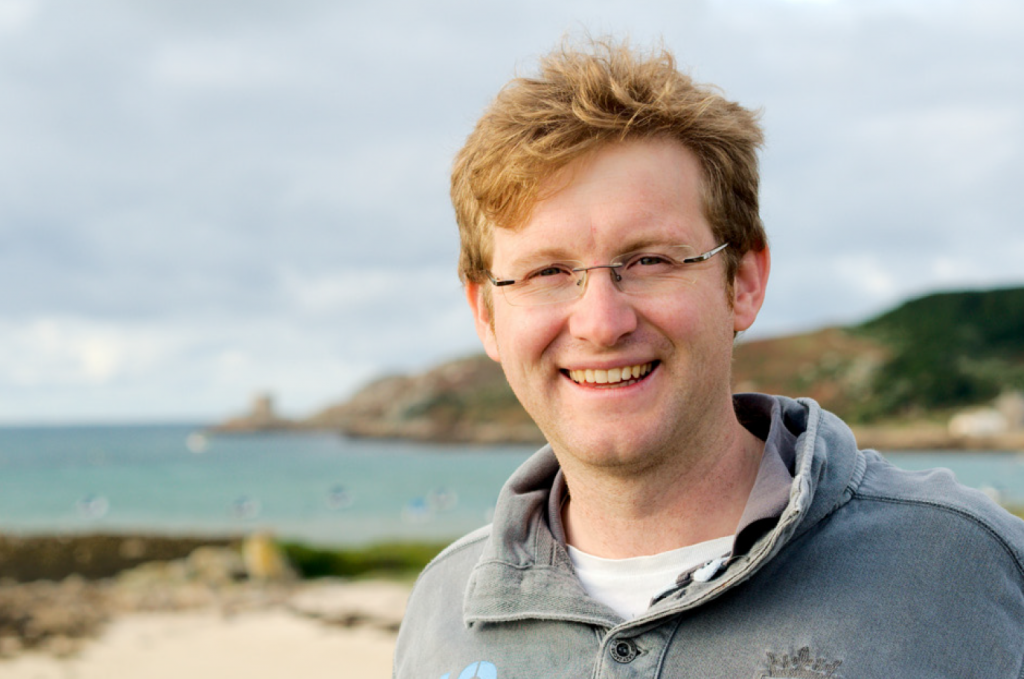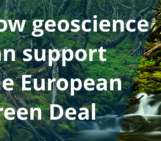Nick Dunstone, the winner of a 2014 EGU Division Outstanding Young Scientists Award, who studies the Earth’s climate and atmosphere, including how they are impacted by natural variation and anthropogenic emissions talks to Bárbara Ferreira, the EGU Media and Communications Manager, in this edition of GeoTalk. This interview was first published in our quarterly newsletter, GeoQ.
 First, could you introduce yourself and tell us a bit about what you are working on at the moment?
First, could you introduce yourself and tell us a bit about what you are working on at the moment?
My name is Dr Nick Dunstone and I am a climate scientist working at the Met Office Hadley Centre in the UK. Here I work within the Monthly to Decadal Climate Prediction group which focuses on developing regional climate prediction capability for all areas of the globe. The monthly to decadal timescale (often referred to as ‘near-term’ prediction) is an emerging and challenging field of climate prediction which attempts to span the void between shorter term weather forecasts (days to weeks) and longer term climate projections (many decades to centuries) using numerical climate models. So, similar to a weather forecast, near-term climate predictions are initialised close to the observed state of the climate and yet, similar to a climate projection; they also include the projected changes in external forcings such as greenhouse gases, anthropogenic aerosols and the solar cycle. Much of my research over the last few years has concerned the amount of predictability in the climate system arising from slowly varying internal processes (for example, slowly varying ocean dynamics) versus how much is driven by external forcings (e.g. anthropogenic emissions).
Earlier this year, you received a Division Outstanding Young Scientists Award for your work on the coupled ocean-atmosphere climate system and its predictability. Could you tell us a bit more about the research you have developed in this area?
Some of my work has considered the role of internal ocean dynamics in driving predictability in the atmosphere. Often we think of the tropical regions as being the engine of the climate system, driving some of the variability in the mid-latitude atmosphere. However, this is not always the case and especially on longer timescales (multi-annual to decadal), the mid-latitudes can drive tropical variability. My colleagues and I illustrated this using a set of idealised climate model experiments that tested the impact of initialising the state of different parts of the world’s oceans. The results showed that it was key to initialise the ocean’s sub-surface temperature and salinity (and so density) in the high latitude North Atlantic to have skill in predicting the multi-annual frequency of model tropical Atlantic hurricanes. This is intimately linked to correctly initialising the model’s Atlantic meridional overturning circulation, and to the question of what sub-surface ocean observations would be needed to do this. I have also worked on how external forcings, such as anthropogenic emissions from industrial pollution, may impact regional climate variability.
A lot of the work you have developed focuses on the anthropogenic impact on the Earth’s atmosphere and climate. What does your research tell us about the extent of the impact of human activities on the Earth’s natural systems?
In the last couple of years we have examined the possible impact of anthropogenic aerosol emissions on multi-decadal changes in climate variability. We found that when the latest generation of climate models include the historical inventory of anthropogenic aerosol emissions, they are capable of better reproducing the phases of observed multi-decadal variability in North Atlantic temperatures. In our Met Office Hadley Centre climate model, we find that this is principally due to the inclusion of aerosol-cloud interactions. When aerosols are present in clouds they can modify the cloud droplet size (known as the 1st aerosol indirect effect), increasing the reflectivity of the clouds and hence decreasing the amount of solar radiation reaching the ocean surface. Variations in aerosol emissions from North America and Europe due to socioeconomic changes (e.g. rapid post-war industrialisation in the 1950s and 1960s and then the introduction of clean-air legislation in the 1970s and 1980s) then drive fluctuations in North Atlantic temperatures in our climate model. Furthermore, we also showed that the frequency of model North Atlantic hurricanes is also driven primarily by anthropogenic aerosol changes and that it is in phase with the observed changes in Atlantic hurricane frequency. Further work needs to be done to understand if this aerosol mechanism is truly operating in the real world. If so, then our work suggests a significant role for humans in unwittingly modulating regional climate variability (especially in the North Atlantic) throughout the 20th century. This also has profound implications for the next few decades, as North America and Europe continue to clean-up their industrial aerosol emissions, whilst the impact of short-term increases in aerosol emissions from developing economies (e.g. China and India) also needs to be studied. Of course, at the same time, the signal of greenhouse gas warming is likely to become more dominant with associated climate impacts.
What is your view on having the Anthropocene accepted as a formal geological epoch? Do you think there are scientific grounds to define the Anthropocene in such a way, or at least in what your research area is concerned?
This is an interesting question but not one that I’ve thought very much about! From a climate scientist perspective, I think it is fairly obvious that we have entered a time when the human fingerprint extends to all (or at least very nearly all) environments on Earth. We see the fingerprint in the concentration of greenhouse gases and water vapour in the atmosphere, land and sea-surface temperatures, deep-ocean warming, ocean sea-level rise, ocean acidification, etc… If physical climate changes alone were the main criterion, then surely there would be no doubt that we have entered a new epoch. Beyond this though, the wider Earth biological system is also being impacted by human activity. For example, previous epochs have also been defined based upon mass species extinction, so there may also be a case here for viewing the Anthropocene as a time when the actions of humanity have led to species extinction. Of course there are then questions about how to define the beginning of this new epoch. Many suggest a geophysical marker such as the 1940s and 1950s when radionuclides from nuclear detonations first became present. Or would it be when the atmospheric CO2 concentration started to rise above pre-industrial levels in the early nineteenth century? Or would it be earlier still, when we started significantly altering the land-surface via large-scale deforestation? Then when would the Anthropocene end? Could we envisage a time in the future when we effectively remove our influence on the climate system, e.g. returning the atmospheric constituents to pre-industrial ratios? Or, rather more grimly, would the Anthropocene only truly be over when our species itself becomes extinct? Whilst these are very interesting ‘dinner-table’ type discussions, from a working climate scientist viewpoint the definition seems largely academic and we’d probably be better off investing our time into researching how we are changing the planet and predicting the associated climate impacts!
On a different topic, according to your page on the Met Office website, you started your career in science as an astrophysicist. Could you tell us a bit about how you made the transition from astrophysics to climate science, highlighting any difficulties you may have had with making such a career change and how you overcame them? What advice would you have for young scientists looking to make a similar move?
To a large extent I think ‘science is science’! Many of the skills are very transferable, especially between physical, computationally based, subjects, where numerical modelling skills are essential. I’ve now met a surprising number of climate scientists who are ex-astronomers, or from some other branch of physics. I think what you need most of all is the drive for learning new things, and making new discoveries, about the physical world in which we live. I found that this is very transferable, applying equally to astrophysics and climate science. I think you settle into a subject slowly and even though I’ve been working in climate science for over 6 years now, I still have lots to learn about our existing understanding of climate system, and that’s exciting. The important thing to realise however, is that you can still make important and useful contributions to a new field quite quickly, especially one as broad as climate science, given the right guidance or supervision.
Finally, could you tell us a bit about your future research plans?
We need to progress both our understanding of natural (internal) variability in climate models and improve the fidelity of important climate teleconnections (processes linking variability in one part of the climate system with climate impacts in a remote region). At the same time we need to progress our understanding of the relative roles of external vs internal forcing in driving variability and extremes in the climate system. On the shorter (seasonal) timescales I am interested in what drives the year-to-year variability in the winter North Atlantic Oscillation, which our latest Met Office seasonal climate prediction systems can now predict with surprisingly good skill. Much of this work I hope to develop during my new post as manager of the Global Climate Dynamics group in the Met Office Hadley centre that I will start in December.
Interview conducted by Bárbara Ferreira
EGU Media and Communications Manager and GeoQ Chief Editor



